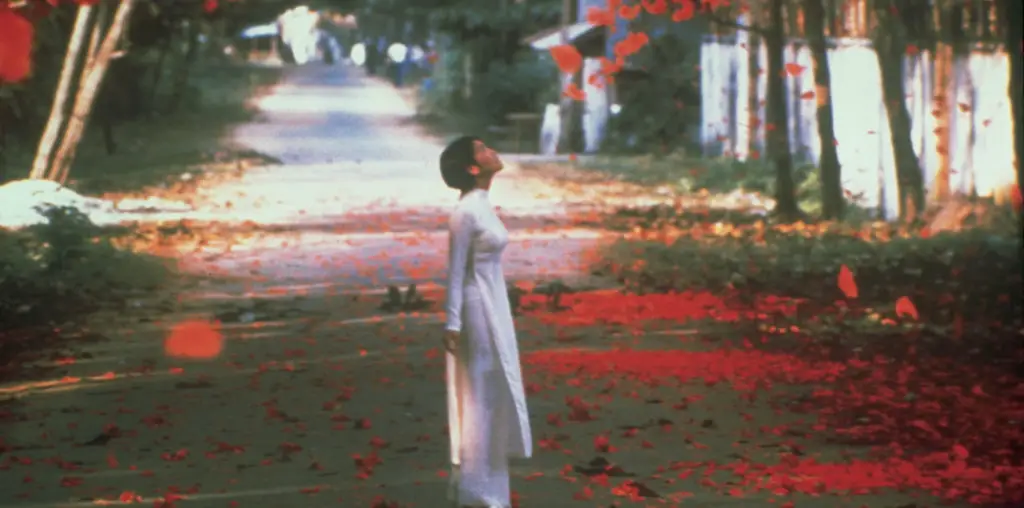
I hadn’t seen “Easy Rider” before I requested this 35th Anniversary Edition to review, but now that I’ve taken it in, I can understand why it’s still considered a seminal film, one that capped an era—the chaotic, free-wheeling 60s—while ushering in another, the so-called “American New Wave” that saw Coppolla, Spielberg, Scorsese, Lucas, et al take Hollywood by storm.
The film tells the story of Wyatt and Billy, two bikers who score a big drug deal and head off for New Orleans to celebrate. Along the way they meet a rancher who offers them a meal, the leader of a commune who fashions himself as a modern-day Jesus, a drunk ACLU lawyer named George Hanson who gets them out of jail and decides to come along for the ride, and a pair of New Orleans prostitutes with whom they drop acid.
On the surface, “Easy Rider” seems like nothing more than a travelogue with a few bits of nondescript dialogue thrown in when 60s-era music isn’t playing on the soundtrack. But there’s a line that Wyatt utters toward the end of the film, before he and Billy meet their fate: “We blew it.” It’s an enigmatic statement juxtaposed against Billy’s excitement over all the money they made, but when you think about it, “We blew it” sums up not only the way the pair squandered an opportunity to make their lives about more than money but also the way the 60s ended: race riots, the deaths of Martin Luther King, Jr. and Robert Kennedy, the deaths of several rock icons, and the violence that marred the Altamont rock festival. Certainly not a way to end a decade that promised peace and love, and the commune scene, in which “Jesus” shows himself to be almost more of a tyrant than a true hippie, clearly illustrates the decay.
“Easy Rider” is rough around the edges, of course. Its modest budget shows in the scene where a character is beaten to death by a bunch of ignorant rednecks—instead of flailing bodies and kinetic energy we get some baseball bats hitting a sleeping bag and a shot of a character suddenly lying there, fake blood clearly smeared on his forehead. And many of the minor characters were locals recruited as the production drove across the country, so some of the dialogue is delivered in a stilted manner.
In fact, even some of the scenes with professional actors come across a bit awkward because so many of them were improvised, although Nicholson is always on the ball in the role of Hanson—the incredulity that scrunches up Hanson’s face when he’s offered a joint is amazing, especially when you consider that the actor had plenty of experience with the stuff himself. But the ideas are what “Easy Rider” is really all about, and Hopper and Fonda clearly had a lot to say, even if they didn’t always know the best way to say it.
This DVD release is identical to the previous one Columbia TriStar issued, except for the bonus soundtrack CD and a British Film Institute book that digs into the making of the film and provides a few interesting behind-the-scenes stills. Aside from the movie, which doesn’t look like it was re-mastered but is still in serviceable shape, we have “Easy Rider: Shaking the Cage,” an hour-long documentary that features most of the principals involved and offers not only plenty of information about the production but also a sense of perspective that only 30 years can offer, as well as an audio commentary by Hopper, which repeats some of the information in the documentary but also offers interesting bits of trivia. Unfortunately, Hopper sometimes lapses into silence too.
Overall, the extras are satisfying, although it would have been nice to drop the music CD and move the documentary to a second disc where it could be housed with some deleted scenes. Hopper’s first cut of the film ran about three hours, so I’m sure there was some interesting footage left on the cutting room floor.
If you have the previous release and don’t care about the BFI book and CD soundtrack, then there’s not much point in picking up this edition. However, if you’ve been meaning to purchase it, by all means grab it. I can’t imagine that anything more in depth is in the future, as I think the disc and the book cover just about everything you’d want to know about “Easy Rider.”

